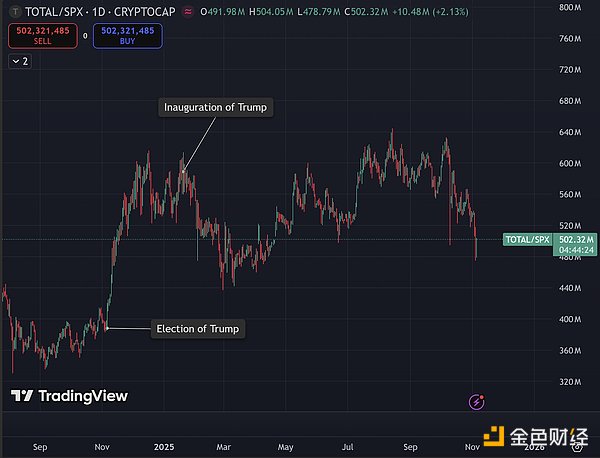Author: Jack Inabinet, Source: Bankless, Translated by: Shaw Jinse Finance
On October 6, 2025, Bitcoin reached a new all-time high, breaking the $126,000 mark. Holders were immersed in an omnipresent optimism, which could be felt everywhere, from the corners of cryptocurrency forums to the newsrooms of CNBC.
While the fundamentals may not have changed much in the following month, just a few days later, on October 11, cryptocurrencies encountered a crisis… The so-called “10/11” flash crash has now become the largest liquidation event in cryptocurrency history.
In this catastrophic drop, the prices of major cryptocurrencies fell by double digits, many altcoins went almost to zero, and cryptocurrency exchanges were liquidated (almost every major perpetual contract exchange “automatically reduced” its short positions due to inability to pay).
Despite the seemingly favorable factors that Donald Trump's election brought to the cryptocurrency industry—from the establishment of a strategic Bitcoin reserve to the appointment of regulators ostensibly supportive of cryptocurrencies—the recent price performance of cryptocurrencies has been objectively poor. Aside from a brief surge following Trump's presidential victory last November, the ratio of total cryptocurrency market capitalization (TOTAL) to the S&P 500 has remained relatively stable for nearly a year. In fact, since Trump's inauguration on January 20, this ratio has even experienced a striking negative growth.

As the cryptocurrency market continues to grapple with the unresolved consequences of the October liquidation, more victims are likely to come to light.
This week, Stream Finance—a $200 million actively managed cryptocurrency income fund that offered depositors above-market returns through leverage—declared bankruptcy after “the external fund manager overseeing the Stream fund” lost approximately $93 million in fund assets.
This week, Stream Finance—a fund managing $200 million in actively managed cryptocurrency income that offered depositors above-market returns through leverage—declared bankruptcy after “the external fund manager responsible for overseeing the Stream fund” lost approximately $93 million in fund assets.
While specific details remain unclear, it appears Stream is likely the first publicly reported victim of a Delta-neutral hedging strategy in the wave of industry-wide "automatic liquidation" (ADL) sweeping the cryptocurrency market. Given Stream's structure, its collapse wasn't entirely unpredictable, but it undoubtedly caught many lenders off guard. They sacrificed security in pursuit of higher returns without any concrete catalyst. Fears of the next bankruptcy immediately spread throughout the decentralized finance (DeFi) space, causing lenders to flee any high-yield strategies that might face similar risks.

Although the immediate contagion effect of Stream appears to be under control at present, this liquidation event still highlights the risks inherent in the currently prevalent circular stablecoin mining strategy in DeFi. This strategy utilizes deposit tokens from existing high-risk, high-return strategies to obtain higher returns.
Stream's self-disclosed losses also indicate that any Delta-neutral hedging strategy crypto fund could suffer huge losses due to ADL, whose unilateral cancellation of short position hedging rendered spot long positions instantly worthless.
While the news headlines have moved past this issue, the October liquidations could have caused catastrophic losses. Whether conducted transparently through DeFi or covertly through centralized finance (CeFi), billions of dollars in leveraged funds have been poured into cryptocurrency yield funds, and the market appears to lack sufficient liquidity to liquidate these positions in a potential wave of liquidations. It's unclear who the ultimate victims are, but someone in the cryptocurrency market is certainly taking a huge risk. If the market becomes volatile again, especially if lawsuits claiming centralized exchanges were insolvent in the October liquidations surface, the question isn't whether there will be losses, but whether the entire industry can withstand them.
 Anais
Anais





